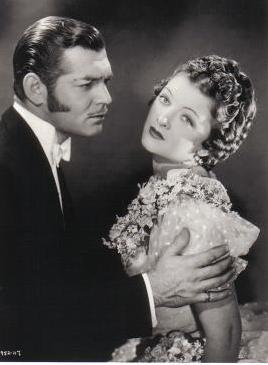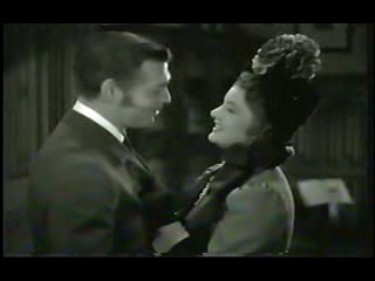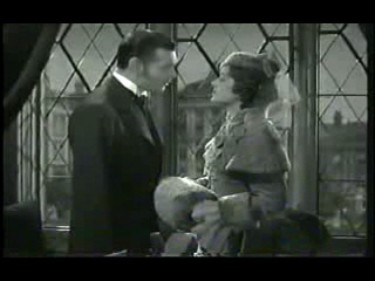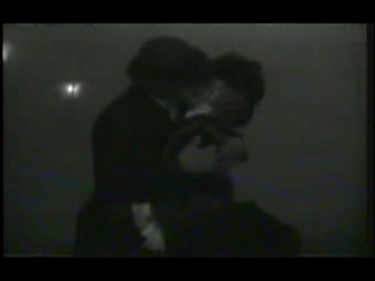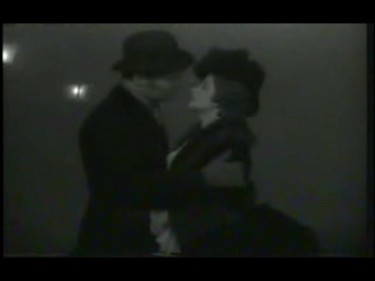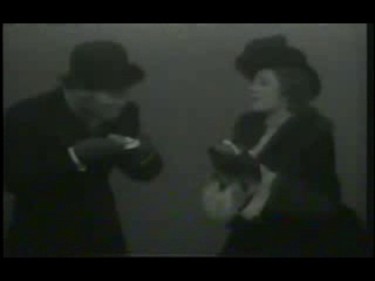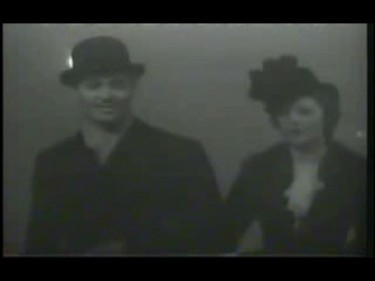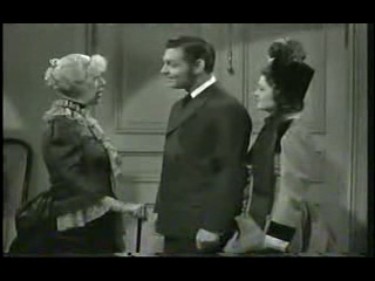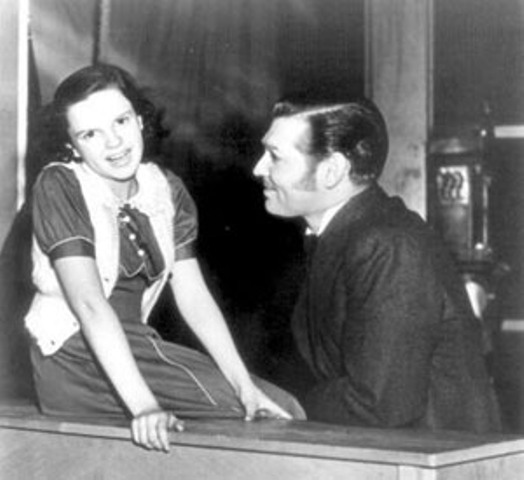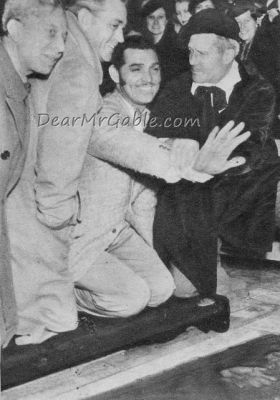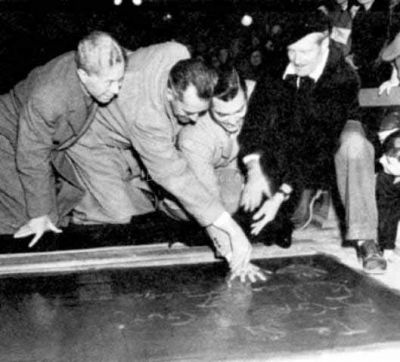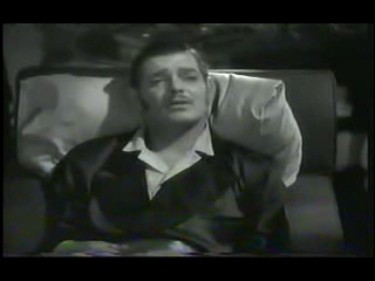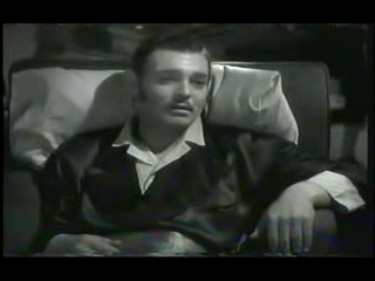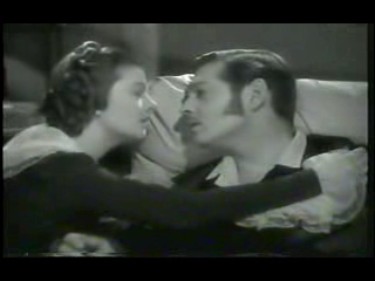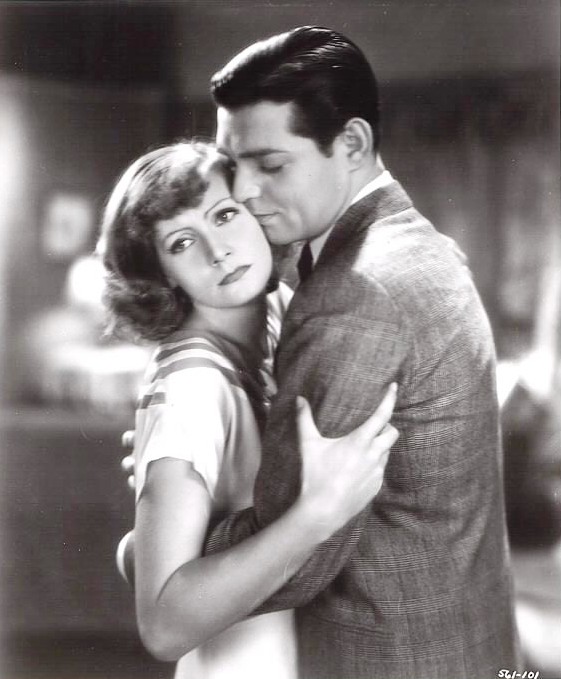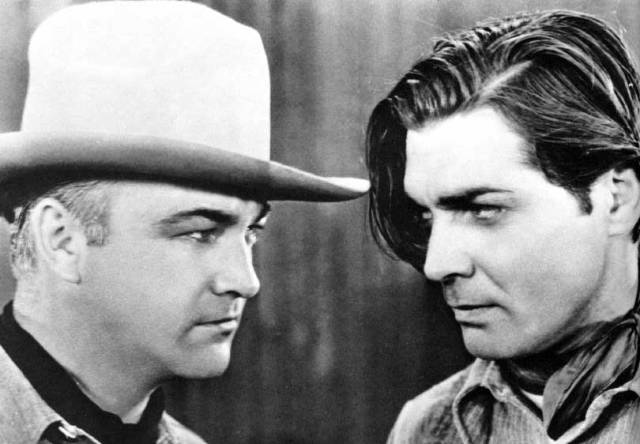July Movie of the Month: Parnell (1937)
In July, for the month that celebrates the anniversary of this website, I always select an important Clark Gable film–one that is a highlight in his career for one reason or another. This year I don’t think that Clark would agree with my choice! It is his much-maligned effort to portray a soft spoken Irishman in Parnell.
In this historical melodrama, Gable is Charles Stewart Parnell, an 1880′s Irish politician dubbed “The Uncrowned King of Ireland” for fighting for Irish freedom from British rule. The British trump up false charges against him to try and keep his efforts down but are unsuccessful. But then Parnell falls in love with Katie O’Shea (Myrna Loy), the estranged wife of a British Parliament member. When her husband finds out, he files for divorce and names Parnell as co-respondent, resulting in political and social ruin for Parnell. Just as he begins to fight back for his position, he is taken ill with a sick heart.
As is the case with most 1930’s biopics, the truth is brushed aside for what will make a better film. There are so many inaccuracies here, it would be difficult to list them all. Most glaring is the fact that while in the film Katie and Parnell love each other but keep on with a seemingly chaste love affair, stealing embraces and kisses only, in reality, Katie and Parnell were engaged in quite the scandalous affair that produced three children! Also, in reality, they were eventually married after the divorce was finalized. The film leaves them unmarried and still pining for each other. Although in both the film and reality, Parnell died in Katie’s arms.
Joan Crawford was the first choice to play Katie O’Shea. Her and Clark had had success in the past few years with light comedic fare such as Forsaking All Others and Love on the Run. Clark encouraged her to take the role; he was enthusiastic about the film and felt she would be the perfect leading lady for it. Joan found the story boring and refused the part; she was gun-shy on historical dramas after the failure of The Gorgeous Hussy. So, Myrna Loy was whisked away from the set of The Last of Mrs. Cheyney, which was to reteam her with her frequent screen partner William Powell, and into Parnell. Joan was put in Myrna’s place in Cheyney. Joan later recalled that Clark was frosty to her after the film’s failure. “I don’t think he ever forgave me for leaving him on that sinking ship,” she said.
I actually think Joan would have been a bad choice. Katie O’Shea is rather quiet and sweet, much more fitting to Myrna. Clark and Myrna always have chemistry, in my opinion anyway. And the love story here, although largely fictional like the rest of this “biopic,” is cute.
“You know, miracles happen; I have my proof of that now. I’ve seen you before today, Mrs. O’Shea. Last week at the opera. You were wearing a white dress with white roses. The lights went up and there you were. Suddenly there was no music, no opera house, nothing. Nothing but a distance between us,” Clark says to Myrna. Myrna later said she thought that speech was the most romantic of Clark’s career.
The scene where they are lost in London and wander around in the thick fog, eating hot potatoes with their hands, lightly debating which direction they could be headed, is adorable.
“What I’ve always wanted to do–eat hot potatoes with you,” he says.
“The world’s still there behind the fog, waiting for us,” she says mournfully after they share a kiss.
Edna May Oliver and Billie Burke both add a light comedic touch as Katie’s aunt and sister. Oliver is a hilarious foible to Burke’s chirpiness. “You speak like the spinster you indefinitely will become!” she hisses to her.
The significance of Parnell to Clark Gable’s career is great. The screenplay was based on a Broadway play that had had a successful run just a few years prior. Louis B. Mayer eagerly acquired the property, as he wanted his MGM to be involved in more “prestige” projects–probably licking his lips salivating over possible Academy Awards. A great deal of money was spent on the film; there were hundreds of extras to be fitted with period costumes, English snow and fog to simulate, and seventy four sets were constructed. Director John Stahl was quite the perfectionist and the shoot was one of the longest of Clark’s career–108 days.
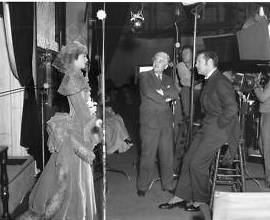
Much of the early press concerning the film was about whether or not Clark was going to grow a beard for the role. The real Parnell had a full, rather bushy, beard. Clark balked at growing a beard and despite Stahl and Mayer’s urgings, would not budge on the issue. The compromise was that Clark grew long “mutton chop” sideburns. They were most unbecoming but I must say, it makes it easy to date candids of him. Sideburns? 1937!
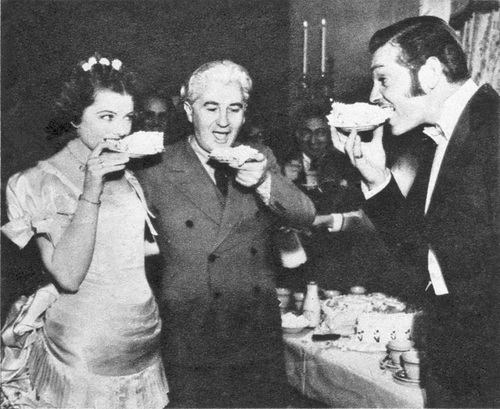
For a film that is widely considered his biggest failure, a lot of notable moments in Clark Gable history took place during the production. For instance, it was while filming Parnell, at Clark’s 36th birthday party on the set, that Judy Garland first sang “Dear Mr. Gable” to him. Her performance led to her repeating the song in The Broadway Melody of 1938. And you know what? That Miss Garland went on to have quite a career…
It was also during production that sideburn-ed Clark put his feet and hands in cement at Grauman’s Chinese Theater.
Parnell had the bad luck of being released three days before Jean Harlow died. Naturally, not a lot of press was given to the new films of that week. And the press it did receive wasn’t great. While for the most part fan magazines applauded it, newspapers were not as generous, and neither was the word of mouth. It ended up losing $637,000 at the box office and was officially labeled “a stinker.” Parnell is most often quoted as the worst Gable film and was always the first one out of Gable’s mouth if asked of his least favorite film of his own. It is even listed in the book The Fifty Worst Films of All Time.
There was endless razzing over the film for Clark. Spencer Tracy used to chide him with “Remember Parnell” on the set of Test Pilot. I just ran across a gossip item from 1941 that said: Just before Clark Gable and Carole Lombard took off on a hunting trip, Clark received a wire from Spencer Tracy. “I’ve just read the New York reviews on ‘Dr. Jekyll and Mr. Hyde,’’ said Spence. “I take back everything I ever said about your ‘Parnell.’”
Carole Lombard had a boy pass out Parnell flyers all over MGM to embarrass Clark. During filming, she couldn’t resist getting a rib in. Clark had been complaining to her that while they shot the death scene, Stahl insisted on playing gloomy music for a solid week. So Carole switched the record one day and instead of doom and gloom, “I’ll Be Glad When You’re Dead, You Rascal You.”
Clark took it all in stride but vowed to never make a historical costume drama again. So that is one of the many reasons that he was not ecstatic about playing a certain Captain Rhett Butler in a certain Civil War drama.
It is rather sad that Clark was repeatedly typecast as the same character again and again. When he tried to step outside the box and do some real drama, the fans cried fowl and Clark retreated back into his little box. Clark was very insecure as an actor and he felt that the fans were right. I don’t think that they were. His performance in Parnell is not bad at all. The film itself is just boring and the script is really lacking. It’s not very interesting to American audiences to have a film center around a 19th century Irish forgery case. Clark’s Rhett Butler showed he had the dramatic chops, but again Rhett was still an extension of the rogues he was used to playing. By the time he showed he could handle real drama in The Misfits, it was too late.
Myrna Loy said later that she liked Parnell and that she didn’t understand the bad press it has received. “Some of the critics complained that we played against type. We were actors for God’s sake. We couldn’t be Blackie Norton and Nora Charles all the time.” She also said that she thought that it’s failure may have been because people couldn’t picture the great he-man Clark Gable sickly and dying of a heart attack. Ironically, she pointed out, that’s exactly what happened in real life.
Parnell is not available on DVD. You can read more about the film here and see over 100 pictures from the film in the gallery.


